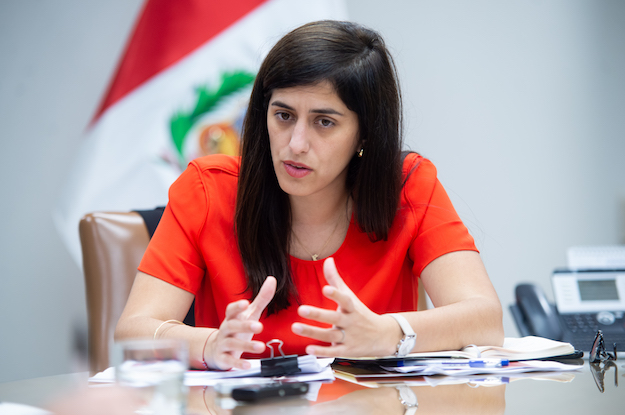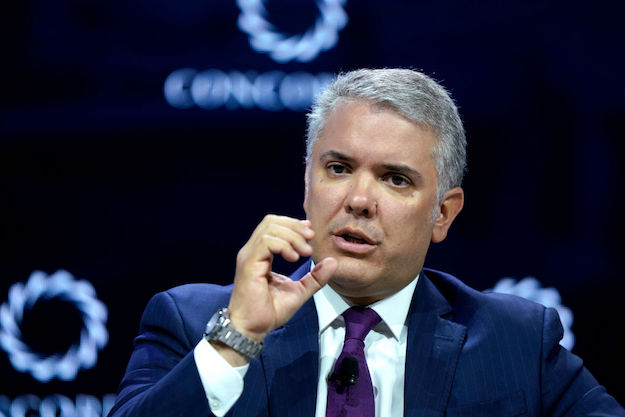Part of a continuing series on how Latin America can overcome a decade of slow economic growth.
Paraphrasing Aristotle, one could say that countries succeed in one way, but fail in many. We have the temptation to explain a crisis, a failure, in terms of a single source; it is simpler and somehow relaxing to believe it is only a question of doing something differently, with a different cast.
But crises are not a varietal; they are a blend.
Take, for example, Argentina’s latest. Barely a year ago, President Mauricio Macri seemed fortified by a mid-term election victory, and the economy was growing at a promising 3.6% annualized rate. Today, inflation is running at 4% a month, the economy is in recession, Argentina’s debt is trading close to distress territory and Macri’s prospects in the October election are uncertain.
How did this happen?
An observer looking for a single clear answer might point to a case of overconfidence. Inflation was more responsive to tariffs, export taxes and exchange rate corrections, and less responsive to monetary policy, than the government thought. This resulted in unattainably low inflation targets that were systematically missed, eroding the reputation of the central bank – but not before interest rates were raised considerably, inviting currency speculation to give a temporary hand by appreciating the peso. Both the electoral victory of 2017 and the currency crisis of 2018 owe quite a lot to this unsustainable appreciation.
Overconfidence would also apply to the real economy. Perhaps an echo of the neoliberalism channeled by President Carlos Menem in the 90s that nurtured Macri and part of his economic team, the first six months of 2016 reflected the belief that a combination of supply-side economics (lower taxes and reduced state interference) and market-friendliness would rouse the animal spirits of foreign and local investors, kickstarting growth and reducing poverty. By mid-2016, with investment failing to react to the lifting of foreign exchange restrictions and the cut in export taxes, and an unexpected recession compromising the mid-term election, the government turned on the fiscal turbo, most notably through a pension reparation law and subsidized lending to the old and the impoverished.
(An aside: Did the government’s overconfidence stem from the conviction that populism was the sole cause of Argentina’s problems? Was it private sector chauvinism: the belief that running a country is like running a business, that the public sector does not work properly because it is populated by undereducated and over-unionized tenured employees – a belief reflected in the quest to reduce “bureaucratization” in a country that has historically suffered from a deficit of qualified professional bureaucrats?)
Alternatively, Argentina’s U-turn could be blamed on a second factor, which we could name “political dominance.” At its root, Argentina’s economic trap is less economic than political: governments need to win an election every two years. It was this electoral imperative that pushed the much-needed pension reform until after the election –twice: in 2017 and, again, in 2019. And it was election anxiety that led the government to force the central bank’s hand into certifying the demise of the inflation targeting at an ill-fated press conference on December 28, 2017, that marked the beginning of the Argentine credit selloff.
Political anxiety may be affordable in good times but it is toxic in a recession. And never is this political “agency problem” – the tradeoff between today’s votes and tomorrow’s notes – more damaging than in a crisis. Would the reforms have moved forward in 2018, had the crisis not popped out of the cake at the height of the green-shoots party? We will never know, but it did not look likely at the time.
None of the above
Both the overconfidence and the political stories are appealing – but they miss the general point: Argentina’s Groundhog Day is anything but new. If anything, the country’s recurrent mishaps are related to two long-run economic handicaps: insufficient exports and a feeble currency.
Argentina’s slow and volatile growth pattern is a natural consequence of the former. In 2017, only two major countries saw trade account for a smaller percentage of their GDP: Brazil and Sudan, according to World Bank data. With foreign currency from primary and primary-based exports only enough to cover imports consistent with a meager growth rate, governments since the mid-1970s have tried to elude this external constraint by running fiscal and external deficits funded, in the absence of an investor base for the peso, with pro-cyclical international capital flows. This works for a while, in line with the global financial cycle, until debt ratios start to rise, and investors start to look for the door. At this point, a dual debt/currency crisis ensues. Eventually, imbalances are squared with the “help” of crippling recessions, capital and exchange controls, and debt restructurings. It is easy to see how this pattern feeds back into the peso problem: Only the most daring of speculators would invest in a currency so erratic – and even then, only for a short time and in exchange for an extraordinary return.
While the focus of Argentina’s risk analysis today may be centered on the potential comeback of Cristina Fernández de Kirchner in November, trained observers know that the true unknown lies in the capacity of any government to find a solution to the country’s binding structural problems.
So what needs to be done? And what are the prospects of success?
There are two pressing issues that would need to be dealt with immediately after the election. First: A new program with the International Monetary Fund to pay for the current one, since it is improbable that the country could repay $57 billion in 2022-2023, and there are indications that the current pace of fiscal consolidation is exhausting the economy. Second: A realistic stabilization program to abort the current exchange rate-inflation spiral, which raised inertial inflation from 30% to 40% in the past six months. Given the recent failures with pure monetary anchors, any new stabilization attempt would additionally require, again, a negotiation, this time with firms and unions.
But both the external deficit and the nominal unrest are the reflection of the deeper problems already mentioned. It will be hard to stabilize debt ratios and regain access to capital markets without solid growth. And with the public sector in permanent adjustment, limited room to engineer a consumption boom, and investors wary of a debt overhang, the stability-growth challenge is starting to look like a chicken and egg problem.
To get out of this stalemate and anchor expectations, a new government would need to send a credible signal that reforms are forthcoming, even at the cost of losing one election.
The to-do list is not new; it has been on the table –and, more recently, on the shelf– for a while. No fiscal consolidation effort will be persistent without a pension reform that phases out or limits the many onerous “special regimes” and rethinks the parameters of the contributive scheme to make it sustainable. The labor reform involves several chapters that should probably be addressed sequentially, but there is no reason to delay an intelligent revision of the tax regime aimed at formalizing independent workers and small businesses for which the current system does not offer a realistic alternative. More formalization and less precarization are the keys to a balanced labor tax system.
This is, admittedly, a lot for a honeymoon window that would last a semester at best. But it is just the gunshot that marks the beginning not of a sprint but of a marathon. Argentina needs a stable and competitive exchange rate to develop exports and exporters, as well as a working currency. It needs years of improved education to lower secondary school dropout rates, reduce the skills mismatch, and improved professional training to protect workers from technological displacement. Raising human capital is the most apparent low-hanging fruit when it comes to growth drivers. The country also needs to develop a local capital market to reduce its dependence on hot money and foster financial intermediation: mortgages, long-term investment, savings by ordinary people that today are spent or sent abroad.
Losing the election to win the war
Make no mistake: No matter how much weight is placed on fairness, reforms have winners and losers, and open the door for political opportunism. To move forward, the government would need to put economic results before electoral ones, would need to lead rather than follow voters’ immediate demands. If the economic trap is political in nature, its solution will be political.
Argentina is a good counterexample of the cooperative nature of development: labor and capital, salaried and independent workers, young and old, interest groups and parties of all kinds have historically bid for a portion of a cake that, in the absence of cooperation, is getting smaller and smaller. More recently, this non-cooperative equilibrium has “evolved” into a tribal version of polarization, as individual positions are starting to be driven less by personal interest than by the changing positions of political leaders – by their tribes.
In 2015, Cambiemos tried to express (or so many Argentinians believed) the aspiration of a broad center coalition, along the lines of Chile’s Concertación or Merkel’s Grand Coalition in Germany: a whole that is better than the parts, because it has the scope needed to elude polarization and propose and promote the necessary reforms. That coalition failed, but the crisis may have revived the demand for dialogue.
There are reasons to be skeptical: the enormity of the challenge, the difficulty to rekindle the enthusiasm of 2016 without a clear vision of the country, the lack of a leader with a clear vision. But the crisis, for all its unnecessary suffering, may have forced some important changes, including a more competitive currency and lower twin deficits, as well as a growing understanding that political polarization tactics may be useful to win the election, at the expense of losing the war. Perhaps this time, having stared into the abyss, leaders are shocked into the realization that cosmetic changes will only keep the country in the loop, and that true changes are needed to win this war, even at the risk of losing an election.
—
Levy-Yeyati is the dean of the School of Government of Universidad Torcuato Di Tella, the founder and Academic Director of the Center for Evidence-based Policy (CEPE-Di Tella) and a visiting professor of public policy at Harvard’s Kennedy School of Government. He is also a principal researcher at Argentina’s National Scientific and Technical Research Council, and the founding of Elypsis Partners, an economic research firm in Argentina.









